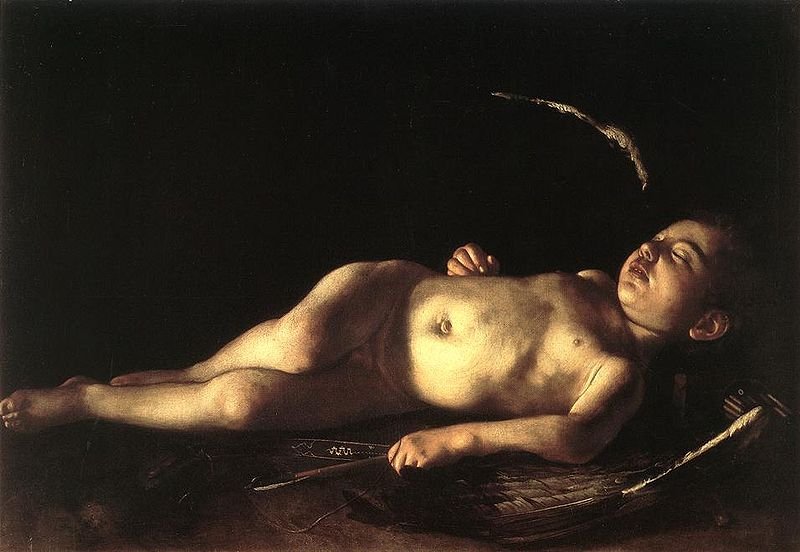The Burial of St Lucy, 1608
Oil on canvas 408 x 300cm
Museo di Palazzo Bellomo, Syracuse
Not Seen
In 2005 I went to the National Gallery in London several times to see a wonderful exhibition of Caravaggio's late paintings, from the period when he fled Rome accused of murder in 1606 until his death whilst returning to Rome from Naples four years later.
Whilst the painting I have chosen is one of his late works and his greatest in the opinion of some critics, it wasn’t in the exhibition. So until I make the journey to Sicily my analysis remains based on reproductions of the original and a first hand viewing of The Raising of Lazarus which is of a similar scale and painted in Messina in north-eastern Sicily a year later.
Caravaggio arrived in Syracuse on Sicily's south-east coast on the run from a knight he had offended in Malta. Here he painted this immense canvas depicting the burial of the early Christian martyr, Saint Lucy. Lucy had been buried in the catacombs on the outskirts of Syracuse and the church built on the site was undergoing restoration in 1608.
It is striking particularly for the high vertical format with the empty upper two thirds of the painting almost abstract apart from the shadow of an archway. In the foreground Lucy’s prone body is framed by two gigantic near naked gravediggers and behind them a confused band of mourners and onlookers. On the right are two shadowy figures, a Bishop giving his blessing and a soldier in a cuirass. Tellingly the digger on the left looks to the soldier for direction on where to put the body, not to the Bishop giving benediction, nor to the deacon glancing down at Lucy.
The whole painting is in thin luminous yellow, amber and brown earth colours with the exception of the bright patch of red showing on the Deacon’s robe. The burial is lit by a raking light from the left and we can just make out the gash in Lucy’s neck where she had been stabbed in the throat after being denounced as a Christian. Her face is thrown back and with one arm clasped to her side and the other outstretched the pose recalls the painting of Sleeping Cupid (this was in the exhibition and looked as if it was a painting of a corpse) that he had just completed in Malta.
Whilst I could have chosen most of the paintings in the exhibition as displaying melancholic characteristics, I am most interested in this one because of the composition. The diminishing line of mourners cleverly expands the spatial depth but it is the space above the frieze of figures weighing down upon the corpse with a stillness and silence that contrasts the busyness of the civil proceedings. As far as I know this is the earliest use of this device for such an effect and contributes immensely to the psychological charge of the image.
©blackdog 2009

